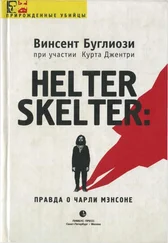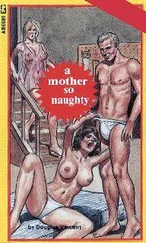Q.“Why don’t they like Negroes?”
A.“I don’t know. They just don’t.”
Q.“They have a natural hate for the Negro?”
A.“They have a natural hate but they would also like to use the Negro as a whole to begin some kind of militant thing…They are really good at picking out angry people.”
This was merely the opinion of one disaffiliated member, and may well not be the official position of The Process itself, but the similarities to Manson’s own philosophy are still chilling.
These are only some of the parallels I found. They are enough to convince me, at least, that even if Manson himself may never have been a member of The Process, he borrowed heavily from the satanic cult. [88] There is at least one precept Manson did not borrow from the group: unmarried adherents are expected to remain chaste.
Nor are these the only connections between the Manson Family and satanists.
Bobby Beausoleil was for a time closely associated with filmmaker Kenneth Anger, who was himself deeply involved in both the motorcycle gang mystique and the occult. Beausoleil starred in Anger’s film Lucifer Rising , playing the part of Lucifer. This was before he ever met Manson.
In his psychiatric report on Susan Atkins, Dr. Joel Hochman wrote of a portion of her San Francisco period, apparently sometime in 1967 or 1968, before she too met Manson: “At this time she entered into what she now calls her Satanic period. She became involved with Anton LaVey, the Satanist. [89] LaVey, founder of the San Francisco–based First Church of Satan, is known, by those knowledgeable in such matters, more as a spectacular showman than as a demonic satanist. He has stated numerous times that he condemns violence and ritual sacrifice.
She took a part in a commercial production of a witch’s sabbath, and recalls the opening night when she took LSD. She was supposed to lie down in a coffin during the act, and lay down in it while hallucinating. She stated that she didn’t want to come out, and consequently the curtain was 15 minutes late. She stated that she felt alive and everything else in the ugly world was dead. Subsequently, she stayed on her ‘Satanic trip’ [for] approximately eight months…”
During the Tate-LaBianca trial, Patricia Krenwinkel doodled. Her two favorite subjects, according to bailiff Bill Murray, were Devil’s heads and the Mendes Goat, both satanist symbols.
Before he killed him, Charles “Tex” Watson told Voytek Frykowski: “I am the Devil and I’m here to do the Devil’s business.”
An apparently important influence on Manson, in both precept and example, was a dead man: Adolf Hitler. Manson looked up to Hitler and spoke of him often. He told his followers that “Hitler had the best answer to everything” and that he was “a tuned-in guy who leveled the karma of the Jews.” Manson saw himself as no less a historical figure, a leader who would not only reverse the karma of the blacks but level all but his own Aryan race—his all-white, all-American Family.
There were both surface and substantive parallels between Hitler and Manson.
Both were vegetarians; both were little men; both suffered deep wounds in their youth, the psychological scars at least contributing to, if not causing, their deep hatred for society; both suffered the stigma of illegitimacy, in Manson’s case because he himself was a bastard, in Hitler’s because his father was.
Both were vagrant wanderers; both were frustrated, and rejected, artists; both liked animals more than people; both were deeply engrossed in the occult; both had others commit their murders for them.
Both were racists; yet there is some evidence that both also believed they carried the blood of the very people they despised. Many historians believe that Hitler was secretly obsessed with the fear that he had a Jewish ancestor. If Manson’s prison records are correct, he may have believed his father was black.
Both surrounded themselves with bootlicking slaves; both sought out the weaknesses of others, and used them; both programmed their followers through repetition, repeating the same phrases over and over; both realized and exploited the psychological impact of fear.
Both had a favorite epithet for those they hated: Hitler’s was “ Schweinehund, ” Manson’s was “pigs.”
Both had eyes which their followers described as “hypnotic”; beyond that, however, both had a presence, a charisma, and a tremendous amount of personal persuasive power. Generals went to Hitler intent on convincing him that his military plans were insane; they left true believers. Dean Moorehouse went to Spahn Ranch to kill Manson for stealing his daughter, Ruth Ann; he ended up on his knees worshiping him.
Both had an incredible ability to influence others.
Both Manson’s and Hitler’s followers were able to explain away the monstrous acts their leaders committed by retreating into philosophical abstractions.
Probably the single most important influence on Hitler was Nietzsche. Manson told Jakobson that he had read Nietzsche. Whether true or not—Manson read with difficulty and Nietzsche is not easy reading—both Manson and Hitler believed in the three basic tenets of Nietzsche’s philosophy: women are inferior to men; the white race is superior to all other races; it is not wrong to kill if the end is right.
And kill they both did. Both believed that mass murder was all right, even desirable, if it furthered the attainment of some grand plan. Each had such a plan; each had his own grandiose obsession: Hitler’s was the Third Reich, Manson’s was Helter Skelter.
At some point parallels become more than coincidence. How much of this was conscious borrowing on Manson’s part, how much unconscious emulation, is unknown. I do believe that if Manson had had the opportunity, he would have become another Hitler. I can’t conceive of his stopping short of murdering huge masses of people.
Some mysteries remain. One is the exact number of murders committed by members of the Manson Family.
Manson bragged to Juan Flynn that he had committed thirty-five murders. When Juan first told me this, I was inclined to doubt that it was anything more than sick boasting on Charlie’s part. There is now evidence, however, that even if this wasn’t true then , the total to date may be very close to, and may even exceed, Manson’s estimate.
In November 1969, Susan Atkins told Ronnie Howard, “There are eleven murders that they will never solve.” Leslie Van Houten used the same number in her interrogation by Mike McGann, while Ouisch told Barbara Hoyt that she knew of ten people the Family had killed “besides Sharon.”
Susan told Virginia Graham that, in addition to the eight Hinman-Tate-LaBianca slayings, “there’s more—and more before.” One was undoubtedly Shea. Another was probably the “Black Panther” (Bernard Crowe), whom Susan, like Manson himself, erroneously believed dead.
Susan may have been referring to Crowe when, in the tape she made with Caballero, she said that the .22 caliber Longhorn revolver used in the Tate homicides had been used in “other killings,” though on the tape this was clearly plural, not singular.
Susan also told Virginia, “There’s also three people out in the desert that they done in.” According to Virginia, Susan “just said it very nonchalant like, mentioning no names.” When Steve Zabriske tried unsuccessfully to convince Portland police that a Charlie and a Clem were involved in both the Tate and the LaBianca murders, he also said that Ed Bailey had told him that he had seen this Charlie shoot a man in the head. The murder had occurred in Death Valley, according to Bailey, and the gun was a .45 caliber automatic. When interrogated by LAPD in May 1970, Bailey, t/n Edward Arthur Bailey, denied this. However, another source, who was for a time close to the Family, claims he heard “there are supposed to be two boys and a girl buried about eight feet deep behind Barker Ranch.”
Читать дальше












